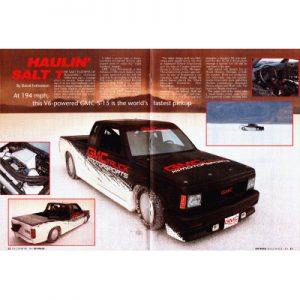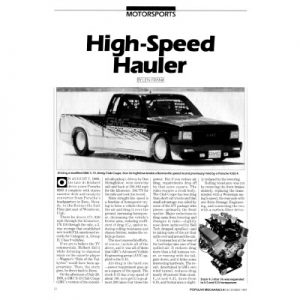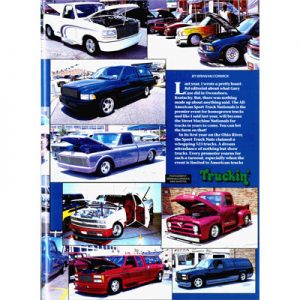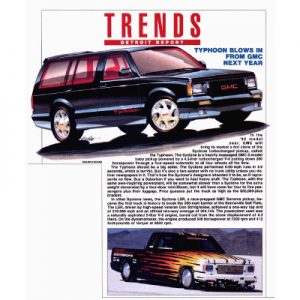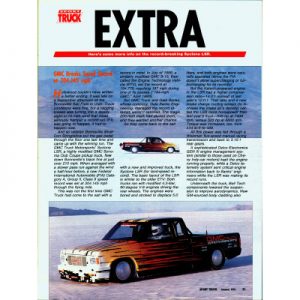Turbo & Hi-Tech Performance
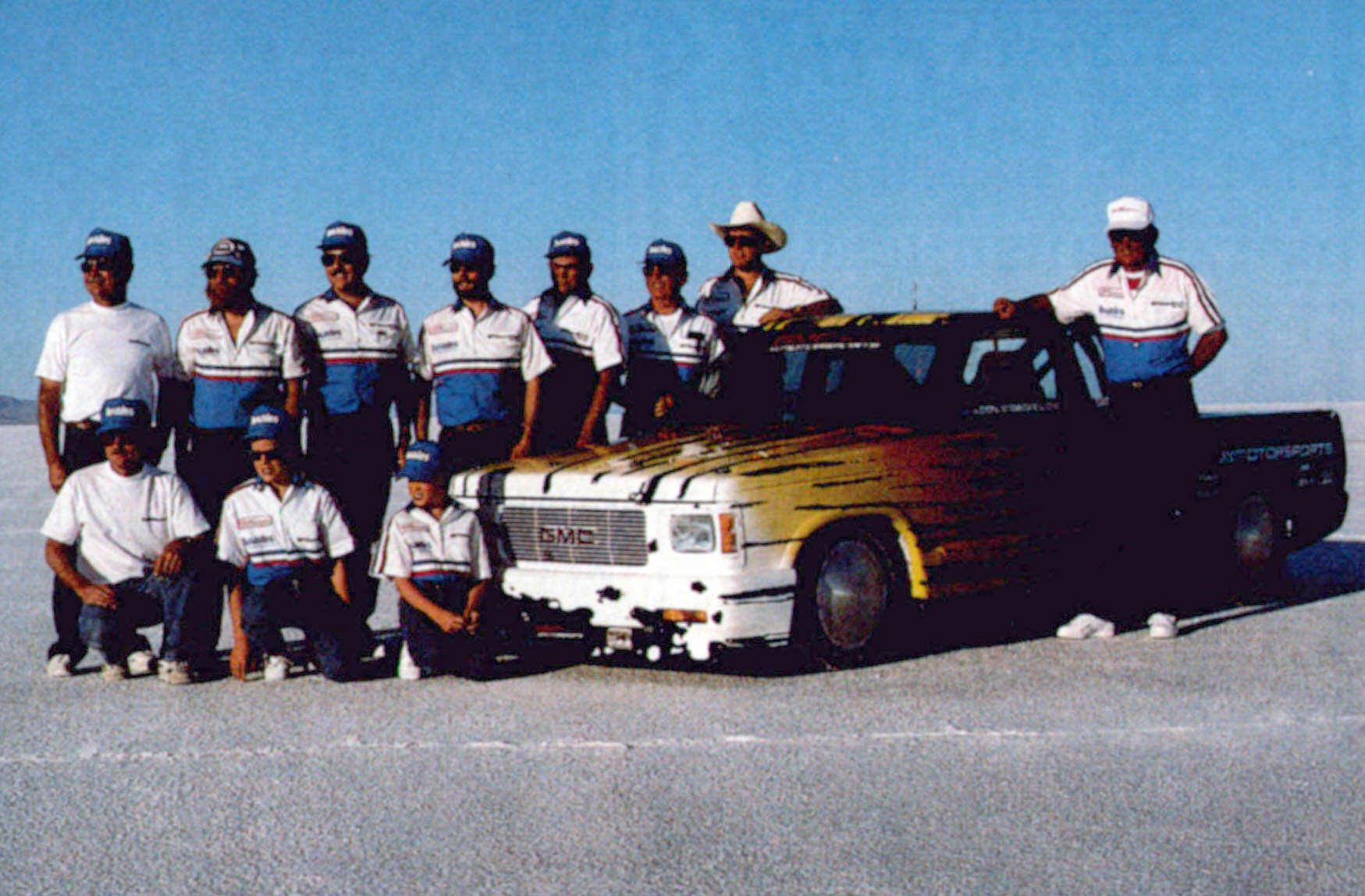
In 1989, GMC set a new world record when the Gale Banks-managed S-15 pick-up, powered with a 5.0-liter V-6 engine, attained 194.770 mph at Bonneville Salt Flats. The team returned again in 1990 with the same pick-up to try and break the 200 mph barrier.
For the 1990 assault, GMC Truck commissioned Vehicle Research and Development to prepare the Syclone LSR. Based upon the 1991 GMC Sonoma Club Coupe, the extended cab compact pick-up is equipped with a Katech race-ready, gasoline-fueled, naturally aspirated 90 degree V-6 engine, enlarged from 4.3 liters to 5.0 liters to meet FIA displacement limits in class.
“The reason we are going back to Bonneville is simple,” says Mike Kramer, Manager-Compact Pickup and Variants Product Line. “We want to validate work being done on the 4.3-liter V-6 as well as perform aerodynamic studies (on the ground effects and suspension) as we look forward to the January 1991 introduction of the high-performance GMC Syclone street machine.”
This year, the BFGoodrich Comp T/A, a street legal radial tire shaved for the special conditions of the Salt Flats, was used for all record attempts. New technology from Delco Electronics, including a new ECM and a Head-Up Display (HUD) that projects information optically on the windshield at the driver’s sight line, also aided the attempts.
They achieved success. The truck went over 200 mph. Then GMC hit on a great idea. Why not invite a small number of the automotive press to a special, second attempt? To that end, the team gathered in the salt to watch as history was made–again.
With the familiar timing truck from the International Motor Sports Association (IMSA) on hand to make it official, several two-way runs were made, but they didn’t break the 200 mph barrier for the two-way average. Finally, with direction from Gale Banks, a rear gear change of only three percent was performed.
There was just enough time for one more two-way pass. Could they do it? Could driver Don Stringfellow overcome the failing light and increasing wind? The truck was off. The one-way time. . .198 and change. The final mile (and final chance) began. The truck buzzed past the anxious onlookers like a bullet. Then came the cheers. He did it: 210.069 on the second leg, making a two-way average of 204.145 mph for the flying mile. It was awesome!

